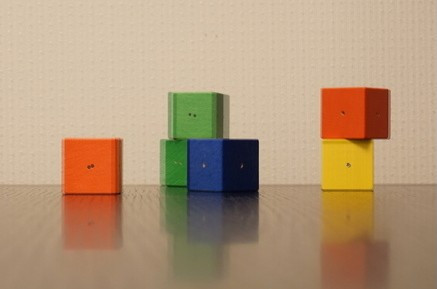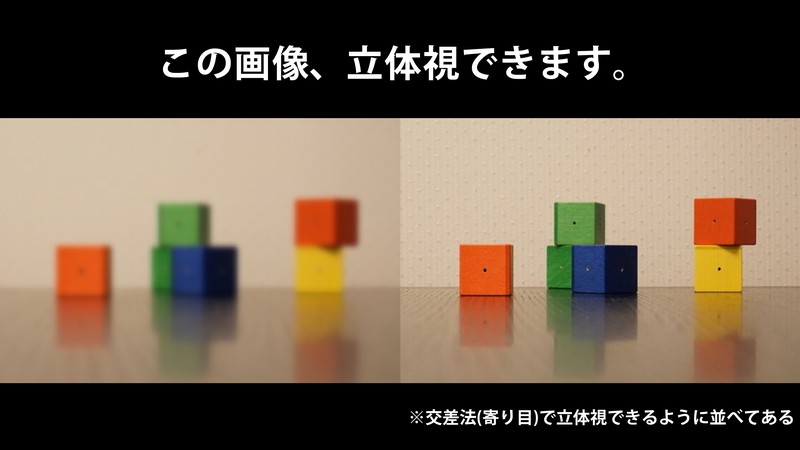In stereoscopic video presentation devices that use displays or screens, glasses-type systems display left-eye and right-eye images overlaid on the same surface. When viewing the images without the specialized glasses, “crosstalk” occurs where both images mix together, impairing the visibility of the video.
Right-eye and left-eye images in conventional methods displayed side by side. (Stereoscopic viewing possible with cross-eye method) Overlaid image of both views

In this research, we developed a video presentation method called “HybriD” that reduces this crosstalk while preserving stereoscopic perception. This method applies human visual characteristics, utilizing the fact that stereoscopic perception can be maintained during binocular viewing even when the spatial frequency of one image is reduced, and that when images with different spatial frequency characteristics are overlaid, the image containing high-frequency components is preferentially recognized.
HybriD applies different spatial frequency filtering to left and right images. One image (typically the right-eye image) retains high-frequency components, while the other image (left-eye image) retains only low-frequency components. This maintains stereoscopic perception when wearing glasses while preserving visibility when glasses are removed.
Images with the proposed method applied. Here, the spatial frequency of the right-eye image (left figure) is reduced. (Stereoscopic viewing possible with cross-eye method) Overlaid image with reduced resolution but eliminated doubling effect seen in conventional methods.

This technology can be applied to various stereoscopic video display systems, including digital signage, movie theaters, and gaming devices. It is particularly expected to be useful in environments where glasses are frequently put on and taken off, or where multiple viewers use the system simultaneously.

